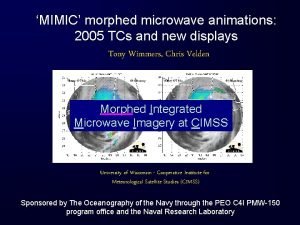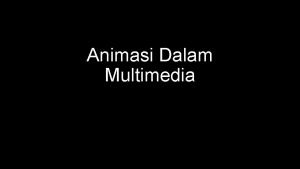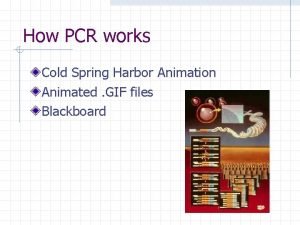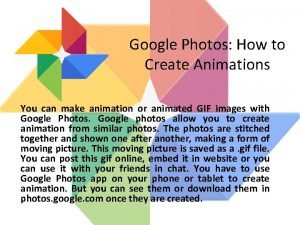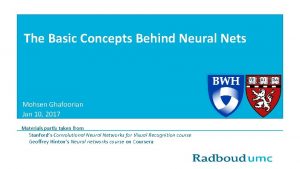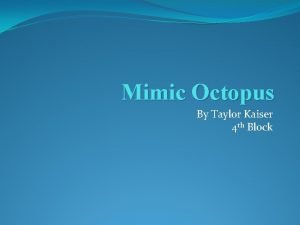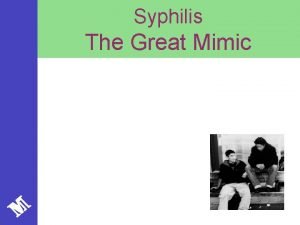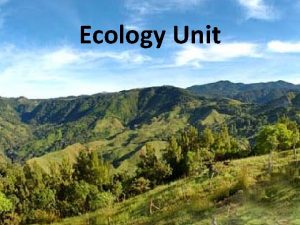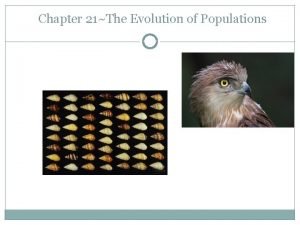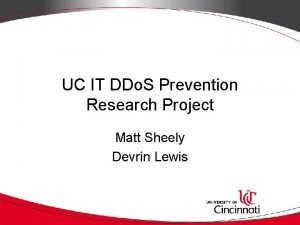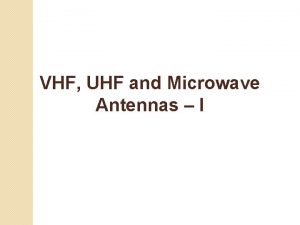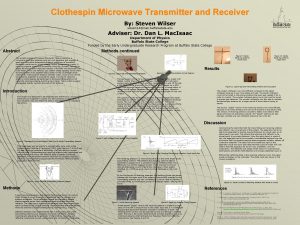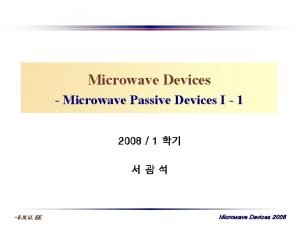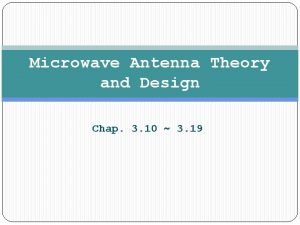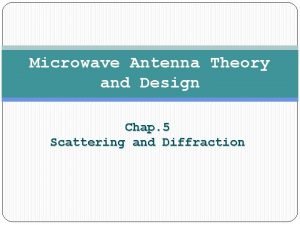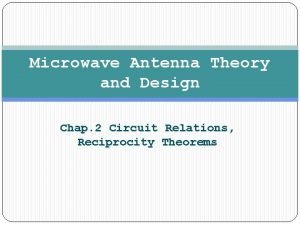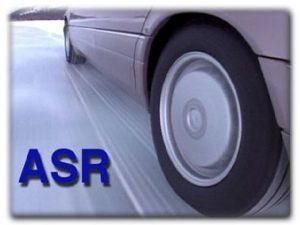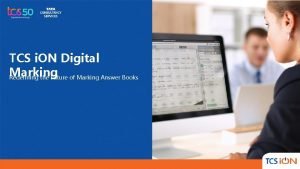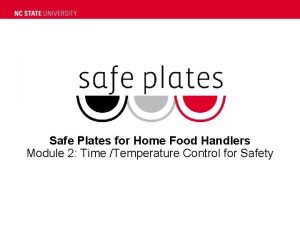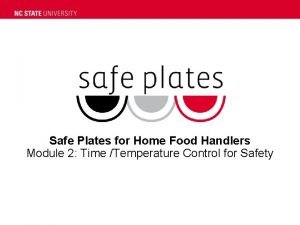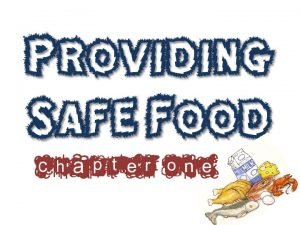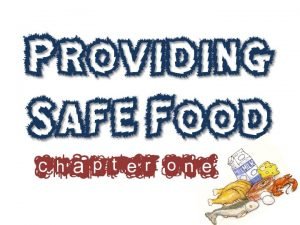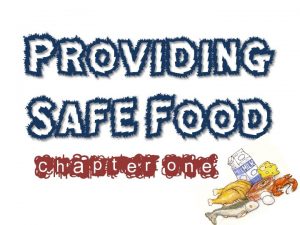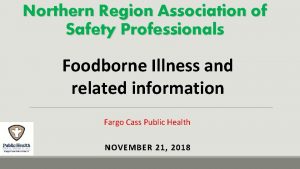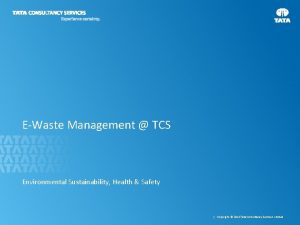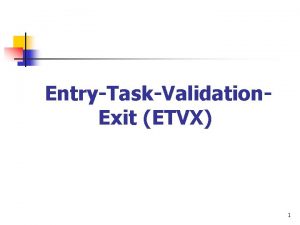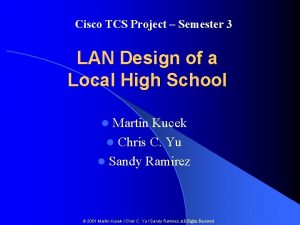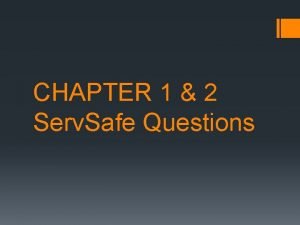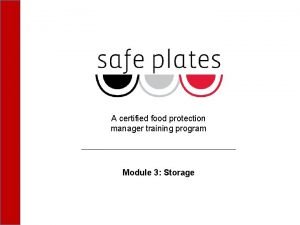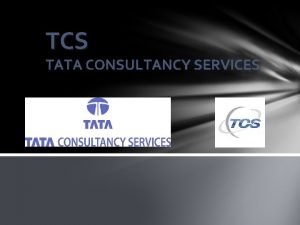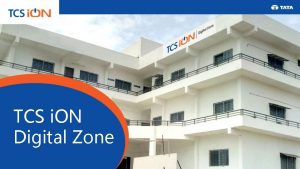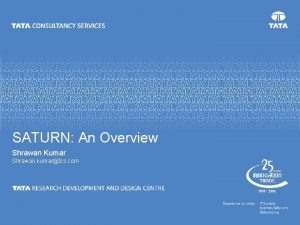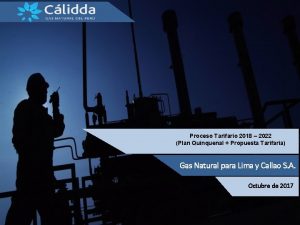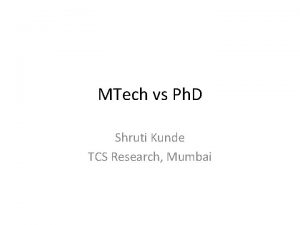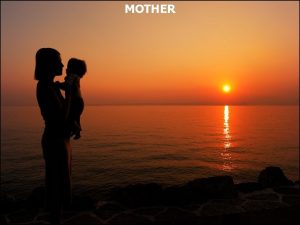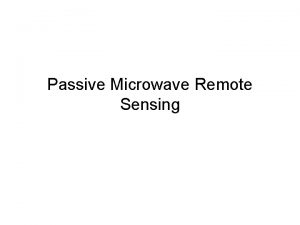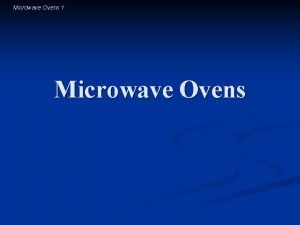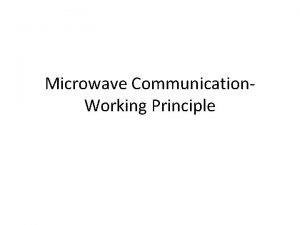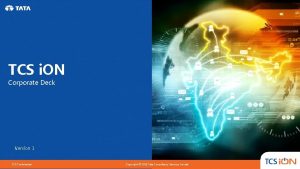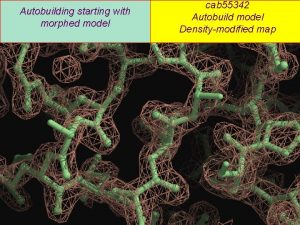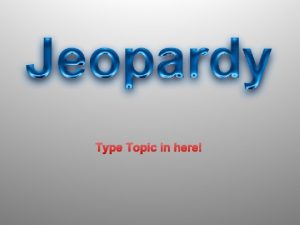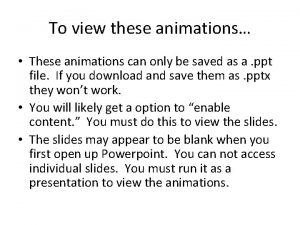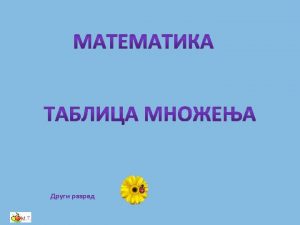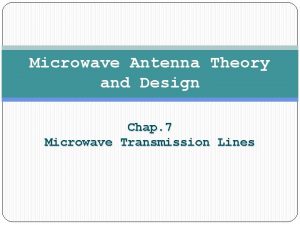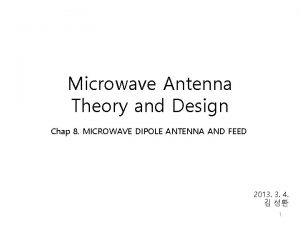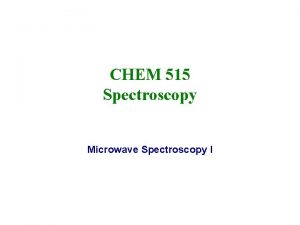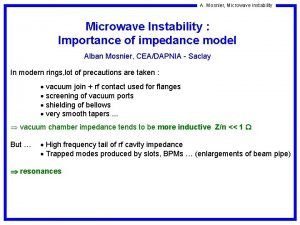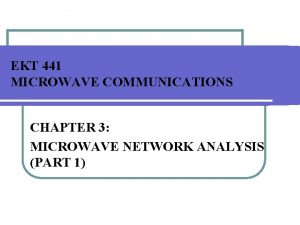MIMIC morphed microwave animations 2005 TCs and new























































- Slides: 55

‘MIMIC’ morphed microwave animations: 2005 TCs and new displays Tony Wimmers, Chris Velden Morphed Integrated Microwave Imagery at CIMSS University of Wisconsin - Cooperative Institute for Meteorological Satellite Studies (CIMSS) Sponsored by The Oceanography of the Navy through the PEO C 4 I PMW-150 program office and the Naval Research Laboratory

85 -91 GHz microwave band DMSP SSM/I TRMM TMI Aqua AMSR-E • 85 -91 GHz channels of the: DMSP 13/14/15 SSM/I, DMSP 16 SSMIS, TRMM Thematic Mapping Imager (TMI) and Aqua AMSR-E • Global coverage

85 -91 GHz microwave band DMSP SSM/I TRMM TMI Aqua AMSR-E • Signal is strongly attenuated by hydrometeors generated by deep convection, so it can be used as a proxy for precipitation (like radar) • Unique tool for observing eyewall dynamics (such as eyewall formation, replacement cycles, motion of spiral bands delivering vorticity to the eye)

Problem: Irregular time gaps in LEO microwave imagery Sept 12 06 08 AMSR-E 10 12 14 TRMM TMI Example: Hurricane Ivan (2004) 16 18 SSMI 20 22 Sept 13 00 02 UTC SSMI

What do we do about it now?

What do we do about it now?

What do we do about it now?

2 major visualization problems Sept 12 06 08 AMSR-E 10 12 14 TRMM TMI 16 18 SSMI 20 22 Sept 13 00 SSMI 1. Irregular time gaps are too difficult to piece together mentally. § This is worsened by the fact that most of us think we’re smart enough to do it.

Example: Hurricane Ivan (2004) 10 Sept, 1220 UTC

Example: Hurricane Ivan (2004) 10 Sept, 1829 UTC

Example: Hurricane Ivan (2004) 10 Sept, 2257 UTC

Example: Hurricane Ivan (2004) 11 Sept, 0202 UTC

Example: Hurricane Ivan (2004) 11 Sept, 0537 UTC

Example: Hurricane Ivan (2004) 11 Sept, 0641 UTC

Example: Hurricane Ivan (2004) 11 Sept, 1131 UTC

Hurricane Ivan (2004): 10 Sept 1200 UTC - 11 Sept 1200 UTC

Morphing strategy 10 Sept, 1829 UTC

Morphing strategy 1) Axially symmetric rotation 10 Sept, 1829 UTC

Morphing strategy 2) ~Holland profile of windspeed (advection) 10 Sept, 1829 UTC

Morphing strategy 3) Advection proportional to reported maximum winds 10 Sept, 1829 UTC

Morphing strategy 3) Advection proportional to reported maximum winds 10 Sept, 1829 UTC

Morphing strategy 4) No advection within ~55 km from the center 10 Sept, 1829 UTC

5) Blended images regenerate once per hour

Example: Katrina, 27 -29 August, 2005

Example: Wilma, 19 -22 October 2005

2 major visualization problems Microwave Geo Infrared Radar 2. Intercomparison between images (esp. microwave and infrared) should be easy - that’s the programmer’s job, not the forecaster’s

• Microwave component uses the Polarization Corrected Temperature (PCT) - a proxy for precipitation • The microwave layer is semitransparent • Yellow areas are ‘no data’ ‘MIMIC-IR’: Katrina, 27 -29 Aug 2005

‘MIMIC-IR’: Wilma, 19 -22 Oct 2005

Latency issues with LEO microwave and geo IR ~ 2 -10 hrs … t - 10 hrs t - 8 hrs t - 6 hrs t - 4 hrs t - 2 hrs t … 15 min

Microwave “persistence forecast” (7 hr latency) 3 hrs persistence fx +3 hrs persistence fx fading out … t - 10 hrs t - 8 hrs t - 6 hrs t - 4 hrs t - 2 hrs t … 15 min

Microwave “persistence forecast” (2 hr latency) 2 hrs persistence fx … t - 10 hrs t - 8 hrs t - 6 hrs t - 4 hrs t - 2 hrs t … 15 min

Persistence forecast: Lessons from 2005 TCs All data 2 -hour persistence forecast § 3 -6 hours is the optimal length of a persistence forecast § 50% of the time, this strategy yields a well-developed nowcast of the TC precipitation structure

Main conclusion Morphing does not add information to the image sequence from which it is built, but it can make the image sequence incredibly easier to visualize

Tradeoffs of morphing Advantages • Easier to interpret than irregularly-spaced image sequences (makes the most of the original imagery) • Can be calculated quickly on a desktop computer (on the order of minutes) without an atmospheric model or radiative transfer model Disadvantages • Still smoothes out the spatial detail somewhat • Not sufficient for capturing transitions in rapidly developing events (cumulus development, rotation inside eyewall) • Morphing can be deceptively convincing, even when it’s done wrong

For more information: § MIMIC website § MIMIC-IR website (NEW) § Real time TCs § Product description § FAQ § 2004 -2005 archives § http: //cimss. ssec. wisc. edu/tr § Real time TCs § Product description § FAQ § 2005 archives opic/real-time/marti. html, pic/real-time/marti/mimic-ir. html, or tinyurl. com/pec 9 s § http: //cimss. ssec. wisc. edu/tro or tinyurl. com/pzxlo


Total Precipitable Water from DMSP-13/14/15

Total Precipitable Water from DMSP-13/14/15

Total Precipitable Water from DMSP-13/14/15

Total Precipitable Water from DMSP-13/14/15

Total Precipitable Water from DMSP-13/14/15

Total Precipitable Water from DMSP-13/14/15

Total Precipitable Water from DMSP-13/14/15

Total Precipitable Water from DMSP-13/14/15

Total Precipitable Water from DMSP-13/14/15

Total Precipitable Water from DMSP-13/14/15

Total Precipitable Water from DMSP-13/14/15

Total Precipitable Water from DMSP-13/14/15

Total Precipitable Water from DMSP-13/14/15

Total Precipitable Water from DMSP-13/14/15 (Cat 4 to Cat 2 in <18 hrs on 09/06)

MIMIC-IR persistence forecast All data Forecast (beginning at 0800 UTC)

10 Sept, 1220 UTC 10 Sept, 1829 UTC How do you deal with these obstacles to morphing? • • • Average temporal spacing between images is 4 -5 hours, but the lifetime of most features is shorter than that Smaller features advect cyclonically with the windspeed, but larger areas of convection remain quasi-stationary Many convective features regenerate repeatedly in the same location

(insert MIMIC-IR Katrina avi) MIMIC: Morphed Integrated Microwave Imagery at CIMSS


 Mimic microwave
Mimic microwave Contoh penggunaan animasi dalam multimedia
Contoh penggunaan animasi dalam multimedia Impulse-style scroll animations
Impulse-style scroll animations Pcr animation gif
Pcr animation gif Animation google photos
Animation google photos Loffe animations
Loffe animations Impact motion tween
Impact motion tween Mimic octopus transformation
Mimic octopus transformation Syphilis titer chart
Syphilis titer chart Mimic octopus transformation
Mimic octopus transformation Mimic poison dart frog
Mimic poison dart frog Mimic poison dart frog
Mimic poison dart frog Mimic poison dart frog
Mimic poison dart frog Ddo template
Ddo template Vhf uhf and microwave antennas
Vhf uhf and microwave antennas Solar power satellites and microwave power transmission
Solar power satellites and microwave power transmission Microwave transmitter and receiver
Microwave transmitter and receiver Neural networks for rf and microwave design
Neural networks for rf and microwave design Microwave passive devices definition
Microwave passive devices definition Microwave antenna theory and design
Microwave antenna theory and design Microwave antenna theory and design
Microwave antenna theory and design Microwave antenna theory and design
Microwave antenna theory and design Traction control system (tcs)
Traction control system (tcs) Tcs internal certification
Tcs internal certification Tcs chile
Tcs chile Tcs digital campus
Tcs digital campus Digital campus tcs
Digital campus tcs Rigor in operations tcs
Rigor in operations tcs Tcs technical hierarchy
Tcs technical hierarchy Servsafe definition
Servsafe definition Safe plates module 2
Safe plates module 2 Tcs food
Tcs food Importance of food
Importance of food Tcs food
Tcs food Tcs foods
Tcs foods Purchasing images
Purchasing images Big 6 illnesses
Big 6 illnesses Tcs kernpakketten
Tcs kernpakketten Ready to eat tcs food must be date marked
Ready to eat tcs food must be date marked E-waste management policy-tcs
E-waste management policy-tcs Etvx model example
Etvx model example Tcs cisco project
Tcs cisco project A food handler stored a sanitizer spray bottle
A food handler stored a sanitizer spray bottle Tcs in food safety
Tcs in food safety Tcs maitree ppt
Tcs maitree ppt Tcs food
Tcs food Tcs partner companies list
Tcs partner companies list Tcs digital zone
Tcs digital zone Ufm in tcs cpa
Ufm in tcs cpa Tcs food
Tcs food Saturn
Saturn Tarifario tcs 2020
Tarifario tcs 2020 Shruti m tcs
Shruti m tcs At what minimum temperature should hot tcs food be held? *
At what minimum temperature should hot tcs food be held? * Tcs connecticut
Tcs connecticut Arquitectura tecnológica tcs
Arquitectura tecnológica tcs
